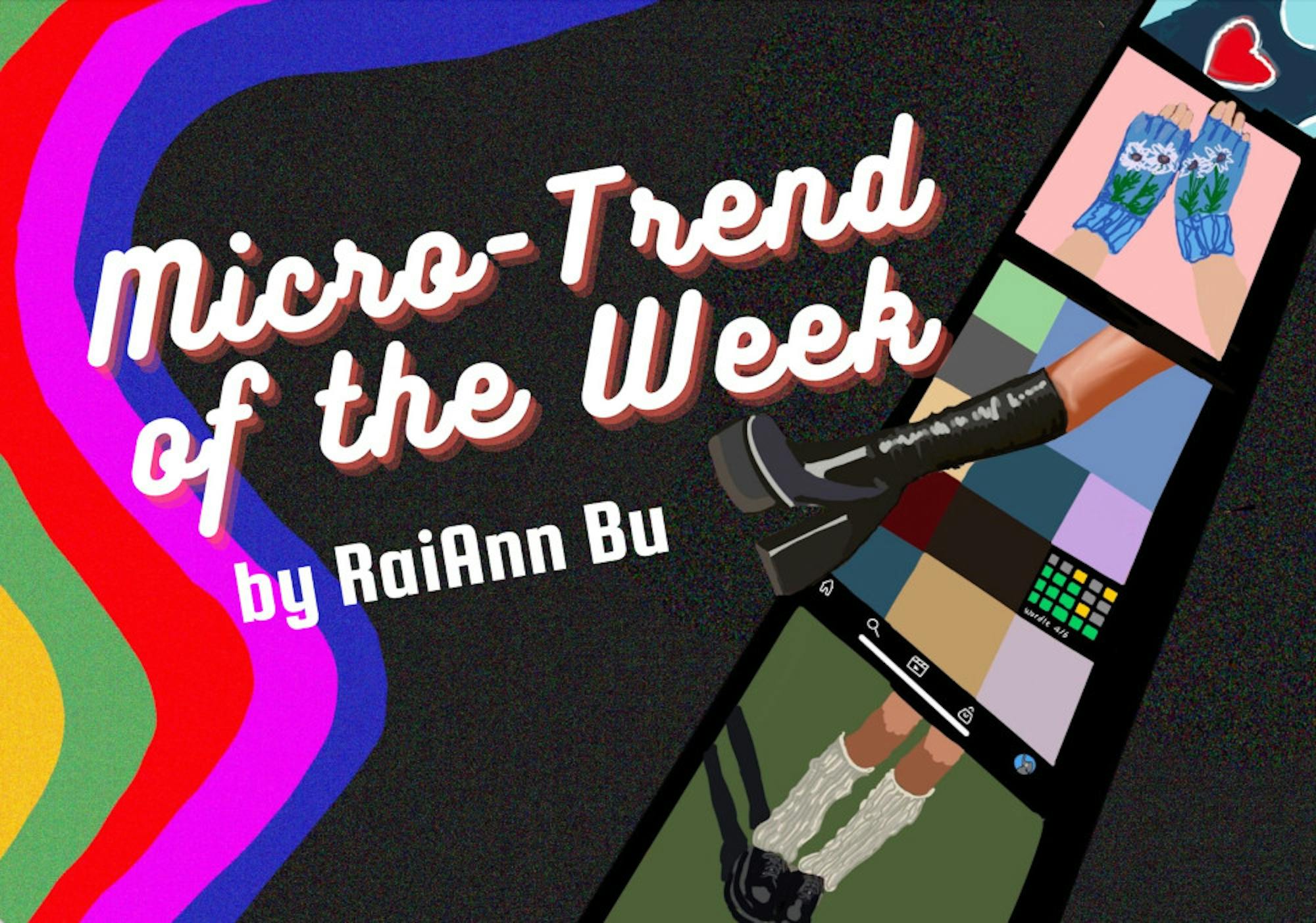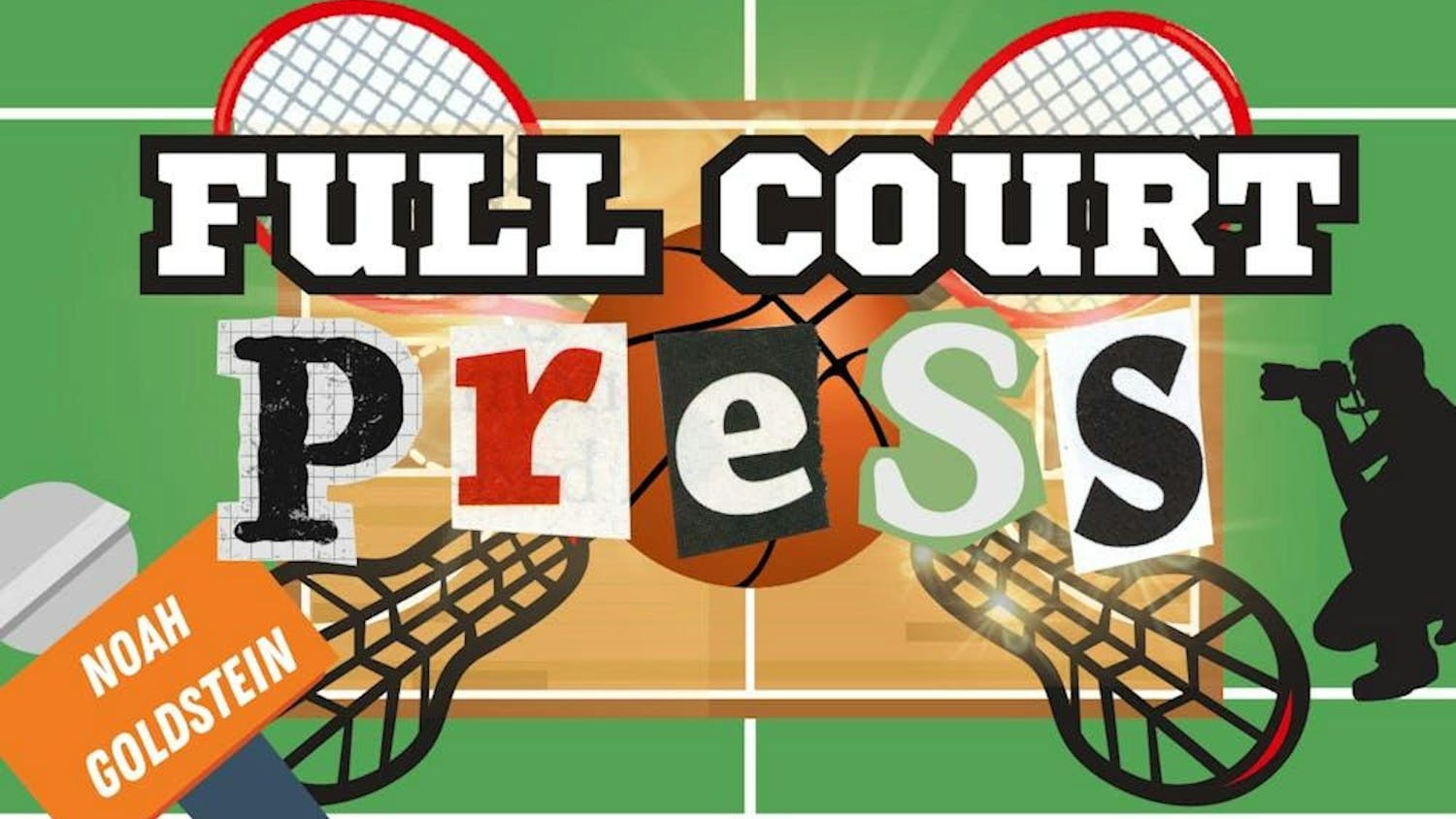The ballet platform has become one of the most coveted new shoes of the season, featured on the runway by designers such as Simone Rocha, Miu Miu, Comme des Garçons and Cecilie Bahnsen. The style has surely begun to make its way into the closet of TikTok influencers, capitalizing off of the ephemerality of the trend. However, this does not discount the history and creativity of asking what would have happened if she didn’t say ‘see u l8ter boi.’
The ballet platform blends two fashion subcultures: the hard, punk stylings with classic, soft aesthetics of dance wear, resulting in a multiple-inch-high ballet shoe that is often duetted with long straps or buckles imitating ribbons on a ballet shoe.
Retrospectively, we can see the punk subculture as one of the most influential styles on current trends. Within the past five years, we’ve seen revivals of staple punk fashion pieces featured in current trends such as the Vivienne Westwood resurgence, slip dresses, corsetry, DIY fashion, gender-neutral wear and most popularly, platforms. Curiously, there hasn’t been an overall nostalgia for punk and alternative styles, with each trend seemingly independent of each other.
The classical ballet flat has fallen victim to the ‘platformarization’ of 2022, with every shoe pumped to the heights of an orthopedic nightmare. Its pervasive influence has refitted boots with a platform and stretched to reinterpret more sacred silhouettes like the Crocs platforms or the upcoming Air Jordan 1 platforms. Even sneakerheads aren’t safe.
On the other hand, ballet as a clothing aesthetic is more recent. With its rise attributed to a desire for more formal loungewear during the pandemic, ballet wear has slowly eased us back into our yoga pants, now titled ‘flared leggings,’ and skin-tight bodysuits.
Ballet culture has always been marked as the pinnacle of femininity, with ballerinas exemplifying a beauty standard of grace, elegance, youth and thinness. This makes ballet culture an obvious muse for fashion, inspired by artistic performance.
However, something notable about both subgroups is their history of exclusion. Ballet has been one of the biggest perpetrators of fatphobia and racism, exclusively featuring one thin, white prototype. Ballet pushes the narrative of a precarious image of thinness and conformity over diversity. This has resulted in numerous stories of abuse within ballet companies resulting in eating disorders, discrimination and assault.
Likewise, the punk community has also been historically white despite its inherent culture of rebellion — a significant action for many oppressed non-white groups. This disconnect is possibly due to the optics; a white person challenging the status quo is exceptional, whereas a Black person challenging the norm is simply existing. The punk community builds off of an intentional anti establishment sentiment which often does not cater to people of color. Furthermore, neo-Nazi and white supremacist groups have long been sections of the punk community, discouraging interest among people of color.
As we draw inspiration from older styles and niches, it is important to remember what the audiences of these aesthetics represented and encourage a reinterpretation inclusive of all bodies and races.
4/10. Definitely a fan of the premise, but I would rather buy a classic loafer.
Micro-Trend of the Week: He was a punk; she did ballet
The ballet platform has become one of the most coveted new shoes of the season, featured on the runway by designers such as Simone Rocha, Miu Miu, Comme des Garçons and Cecilie Bahnsen. The style has surely begun to make its way into the closet of TikTok influencers, capitalizing off of the ephemerality of the trend. However, this does not discount the history and creativity of asking what would have happened if she didn’t say ‘see u l8ter boi.’
The ballet platform blends two fashion subcultures: the hard, punk stylings with classic, soft aesthetics of dance wear, resulting in a multiple-inch-high ballet shoe that is often duetted with long straps or buckles imitating ribbons on a ballet shoe.
Retrospectively, we can see the punk subculture as one of the most influential styles on current trends. Within the past five years, we’ve seen revivals of staple punk fashion pieces featured in current trends such as the Vivienne Westwood resurgence, slip dresses, corsetry, DIY fashion, gender-neutral wear and most popularly, platforms. Curiously, there hasn’t been an overall nostalgia for punk and alternative styles, with each trend seemingly independent of each other.
The classical ballet flat has fallen victim to the ‘platformarization’ of 2022, with every shoe pumped to the heights of an orthopedic nightmare. Its pervasive influence has refitted boots with a platform and stretched to reinterpret more sacred silhouettes like the Crocs platforms or the upcoming Air Jordan 1 platforms. Even sneakerheads aren’t safe.
On the other hand, ballet as a clothing aesthetic is more recent. With its rise attributed to a desire for more formal loungewear during the pandemic, ballet wear has slowly eased us back into our yoga pants, now titled ‘flared leggings,’ and skin-tight bodysuits.
Ballet culture has always been marked as the pinnacle of femininity, with ballerinas exemplifying a beauty standard of grace, elegance, youth and thinness. This makes ballet culture an obvious muse for fashion, inspired by artistic performance.
However, something notable about both subgroups is their history of exclusion. Ballet has been one of the biggest perpetrators of fatphobia and racism, exclusively featuring one thin, white prototype. Ballet pushes the narrative of a precarious image of thinness and conformity over diversity. This has resulted in numerous stories of abuse within ballet companies resulting in eating disorders, discrimination and assault.
Likewise, the punk community has also been historically white despite its inherent culture of rebellion — a significant action for many oppressed non-white groups. This disconnect is possibly due to the optics; a white person challenging the status quo is exceptional, whereas a Black person challenging the norm is simply existing. The punk community builds off of an intentional anti establishment sentiment which often does not cater to people of color. Furthermore, neo-Nazi and white supremacist groups have long been sections of the punk community, discouraging interest among people of color.
As we draw inspiration from older styles and niches, it is important to remember what the audiences of these aesthetics represented and encourage a reinterpretation inclusive of all bodies and races.
4/10. Definitely a fan of the premise, but I would rather buy a classic loafer.
The ballet platform has become one of the most coveted new shoes of the season, featured on the runway by designers such as Simone Rocha, Miu Miu, Comme des Garçons and Cecilie Bahnsen. The style has surely begun to make its way into the closet of TikTok influencers, capitalizing off of the ephemerality of the trend. However, this does not discount the history and creativity of asking what would have happened if she didn’t say ‘see u l8ter boi.’
The ballet platform blends two fashion subcultures: the hard, punk stylings with classic, soft aesthetics of dance wear, resulting in a multiple-inch-high ballet shoe that is often duetted with long straps or buckles imitating ribbons on a ballet shoe.
Retrospectively, we can see the punk subculture as one of the most influential styles on current trends. Within the past five years, we’ve seen revivals of staple punk fashion pieces featured in current trends such as the Vivienne Westwood resurgence, slip dresses,corsetry, DIY fashion,gender-neutral wear and most popularly, platforms. Curiously, there hasn’t been an overall nostalgia for punk and alternative styles, with each trend seemingly independent of each other.
The classical ballet flat has fallen victim to the ‘platformarization’ of 2022, with every shoe pumped to the heights of an orthopedic nightmare. Its pervasive influence has refitted boots with a platform and stretched to reinterpret more sacred silhouettes like the Crocs platforms or the upcoming Air Jordan 1 platforms. Even sneakerheads aren’t safe.
On the other hand, ballet as a clothing aesthetic is more recent. With its rise attributed to a desire for more formal loungewear during the pandemic, ballet wear has slowly eased us back into our yoga pants, now titled ‘flared leggings,’ and skin-tight bodysuits.
Ballet culture has always been marked as the pinnacle of femininity, with ballerinas exemplifying a beauty standard of grace, elegance, youth and thinness. This makes ballet culture an obvious muse for fashion, inspired by artistic performance.
However, something notable about both subgroups is their history of exclusion. Ballet has been one of the biggest perpetrators of fatphobia and racism, exclusively featuring one thin, white prototype. Ballet pushes the narrative of a precarious image of thinness and conformity over diversity. This has resulted in numerous stories of abuse within ballet companies resulting in eating disorders, discrimination and assault.
Likewise, the punk community has also been historically white despite its inherent culture of rebellion — a significant action for many oppressed non-white groups. This disconnect is possibly due to the optics; a white person challenging the status quo is exceptional, whereas a Black person challenging the norm is simply existing. The punk community builds off of an intentional anti establishment sentiment which often does not cater to people of color. Furthermore, neo-Nazi and white supremacist groups have long been sections of the punk community, discouraging interest among people of color.
As we draw inspiration from older styles and niches, it is important to remember what the audiences of these aesthetics represented and encourage a reinterpretation inclusive of all bodies and races.
4/10. Definitely a fan of the premise, but I would rather buy a classic loafer.






